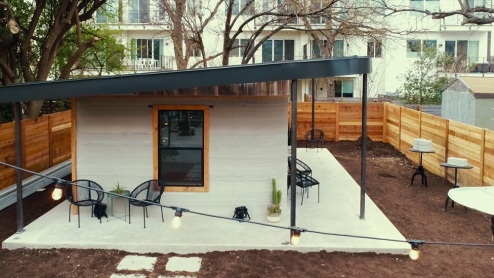 “The right thing is to just give teachers a raise,” said Florida House Democratic Leader Janet Cruz, who represents Tampa.
“The right thing is to just give teachers a raise,” said Florida House Democratic Leader Janet Cruz, who represents Tampa.
“It is embarrassing and I am ashamed that Florida pays our teachers $10,000 a year less than the national average. We are one of the largest states in the country. If we continue to recruit and retain the most talented people to educate our children, it starts with paying them a wage that they can live on without working a second job.”
The national average salary for public school teachers was $58,064 in 2015-2016. Average teacher salaries range from a low of $42,025 in South Dakota to a high of $77,957 in New York, according to an annual data set published by the National Center for Education Statistics.
According to payscale.com the School District of Indian River County (SDIRC) “pays its employees an average of $49,455 a year. SDIRC employees with the job title Elementary School Teacher make the most with an average annual salary of $53,932, while employees with the title High School Teacher make the least with an average annual salary of $48,608.”
https://www.payscale.com/research/US/Employer=School_District_of_Indian_River_County/Salary
indeed.com reports the following hourly rates for SDIRC teachers.
Teacher: $ 25.00/hr.
Teaching Assistant: $ 13.48/hr.
Substitute: $ 12.33/hr.
https://www.indeed.com/cmp/School-District-of-Indian-River-County/salaries
With regard to the Teacher Assistant wages, a Vero Beach reader wrote to us the following:
“Yes .. she has been with the IRC School District since 1991..
I was SHOCKED that her W2 was only $15,000 + – for the YEAR!
For a first year aide – I could see that – but 17 years of service ??? I pay my receptionist more than that.”
At an Indian River County, FL Taxpayers Association Meeting on May 9, 2018, Dr. Mark Rendell, Superintendent of the SDIRC indicated the average salary in the SDIRC is upwards to $ 48,000.
If $ 48,000 is the average salary then that means a new teacher could earn a $ 36,000 salary. What if that teacher was a single mom? Two jobs?
Even with an average salary of $ 48,000, how can SDIRC recruit teachers who would be able to afford to live here?
Perhaps this is why the May 16, 2018 the School District of Indian River County (SDIRC) web site lists 108 job openings. 25 are for elementary school teaching, 12 are for middle school and six are for high school teaching. Teachers are 39% of the openings.
It is not less expensive to live here to have that be a draw for young teachers. And there is nothing for young people to do here. It’s boring and hard to meet people; particularly if they are single. Unless they surf.
In a July 18, 2016 News Release by Helene Caseltine, Economic Development Officer of the Indian River County Chamber of Commerce she cited that: “Our cost of living indices are based on a US average of 100. An amount below 100 means Indian River County, Florida is cheaper than the US average. A cost of living index above 100 means Indian River County, Florida is more expensive. Indian River County, Florida cost of living is 100.30.
In a recent survey, the average purchase price of a new 2400 square foot 4-bedroom/2-bath home in Indian River County was $247,903, slightly less than in 2015 when the average selling price was $254,734.”
The average price for renting a three-bedroom apartment is = 1,183
https://www.bestplaces.net/cost_of_living/county/florida/indian_river

Florida is seventh from the bottom
Then there is the issue of attrition.
If 39% of the openings are teachers, why did the others leave??
According to publicschoolreview.com, in Indian River County “The student: teacher ratio of 16.1 is equal to the state average of 16:1”
https://www.publicschoolreview.com/florida/indian-river/1200930-school-district
Once again, according to publicschoolreview.com, “there are 29 public schools in Indian River County, Florida, serving 17,979 students.”
https://www.publicschoolreview.com/florida/indian-river-county
We could not find any data on the number of teachers but using the 16:1 formula that would be 1,124 teachers.
At the same Taxpayer’s Association meeting, Dr. Rendell indicated teacher attrition was 15%; in line with the national standard. 15% of 1,124 is 168 teachers.
32963 reported on May 17, 2018 that they found “that nearly 200 teachers out of 1,120 left the District last year which amounts to a 18 percent turnover.”
Meanwhile, idahoednews.org reported on December 21, 2017 that “Idaho’s teacher attrition rate is 10 percent, compared to the national average of 8 percent.”
A September 15, 2016 article by the Learning Policy Institute wrote that: “High levels of attrition, estimated to be nearly 8% of the workforce annually…”
https://learningpolicyinstitute.org/product/coming-crisis-teaching
(Seventy-seven percent of public-school teachers are women, according to the National Center for Education Statistics. There is an idea teaching is “women’s work.” According to a “The View Opener” in Time on April 23, 2018 “The conditions that have led to the strike [in Oklahoma and elsewhere] have shocked even education experts. In 39 states, teacher’s salaries have declined since 2010; many are asked to pay more for benefits, reducing their take-home pay even as private-sector wages rise.”)
WHAT ARE THE CONSEQUENCES OF ATTRITION?

Here are two examples:
Stacey Klim, a Vero Beach mother, wrote that “my son’s class hasn’t had a teacher all year. They got a long-term substitute in February who is there through the end of the year and I hope comes back next year. The school is Rosewood Magnet.
My daughter’s school – Oslo Middle – hired a teacher for digital technology and he doesn’t have a teacher certificate to teach. You can look up any teacher to see their certificate at: https://flcertify.fldoe.org/datamart/searchByNameFLDOE.do?anchor=a2c3ca6.0”
This just goes to the fact that they are hiring anyone because they can’t recruit teachers to teach here!”
HOW TO ADDRESS ATTRICION:
There are some simple solutions, suggested by Mrs. Klim. Put together, for example, a package that includes:
- Free passes to the Vero Art Museum
- Discounted tickets at Riverside Theatre
- Adult sailing lessons at the Youth Sailing Foundation
- Low-interest loans
- Coupons to restaurants
- Free Pass to McKee Gardens
Then there is a more complex solution. Building affordable housing for the teachers.
USA Today reported on March 21, 2016 that “San Francisco announced in October that it would take steps to build 100 housing units for the city’s educators and consider rental subsidies and forgivable loans to keep 500 educators in the city. The project is still early in development with no timeframe or designated site, according to the mayor’s office. Funding for San Francisco teachers’ housing would come from both the city and the school district.
“A policy for determining which educators get access to the housing will be adopted by the School Board in the future should we be able to make an educator housing development financially feasible,” wrote Francis Tsang, the chief deputy communications director for San Francisco Mayor Ed Lee.
Cupertino Union School District, the home of Apple, announced in December that it sought to build 200 housing units for its employees by 2019 on the site of an elementary school that closed in 1983. The district will offer the apartments to teachers and staff at below market rates.”
https://www.usatoday.com/story/news/2016/03/21/school-districts-build-teacher-housing/81583792/
More and more counties are addressing the gap between modest teacher salaries and their cost of living by building teacher housing.
“In Miami, the county is considering a proposal to build apartments on school property and let faculty live there.
A preliminary proposal includes constructing a new mid-rise middle school in the luxe Brickell area for Southside Elementary, with a floor devoted to residential units, and several more reserved for parking and the classrooms on top.
If this initial step is successful Miami-Dade wants a full-fledged housing complex next to Phillis Wheatley Elementary, with as many as 300 apartments going up on the campus just north of downtown.
Miami-Dade is already in talks with Housing and Urban Development, the federal agency that oversees some of the county’s affordable-housing projects. JPMorgan Chase gave a $215,000 grant to the nonprofit Miami Homes For All to help develop the Wheatley plan, according to a March 22 company release.
(http://www.miamiherald.com/news/local/community/miami-dade/article206839799.html)
“In western Colorado, the Roaring Fork district has the largest project underway, with plans to build a total of 60 new subsidized apartments in three locations using $15 million from the district’s 2015 bond issue. Those units will become available in 2018.” (1/6/17 The Atlantic)

Williams-Baldwin Teacher Campus, Ashville, N.C.
Then consider this:
According to treehugger.com, prefabricated housing are some potential solutions, but others are offering even more radical proposals, such as American startup ICON. They recently unveiled this affordable, 650-square-foot home that was 3D printed out of concrete in under 24 hours using a mobile printer, at the SXSW festival in Austin, Texas — they say it’s the first permitted home of its kind in the US that complies with local building standards.”
Here’s a home like this that can be built in less than 24 hours at a cost of only $4,000. The secret? 3D printing.
https://www.youtube.com/watch?v=wCzS2FZoB-I
Wikipedia: “3D printing is any of various processes in which material is joined or solidified under computer control to create a three-dimensional object,[1]”

3D printed small house
Stacy Klim of Vero Beach, who we referenced earlier, is going to do this in Indian River County.
Ms. Klim is currently discussing the project with developers, commercial lenders and realtors. She has no idea where a campus would be built or how it would be paid for. But she said: “This is something I definitely feel we can do, something I’m passionate about doing and am going to keep working on and talking about and do it.”
WHAT ABOUT THE PENCILS?
When this writer was in elementary, middle and high school we had “supply rooms,” with pads of paper, pencils, chalk, magic markers, white board markers, rulers, etc.
Now we are hearing from teachers that they are regularly buying their own school supplies. Apparently, there are no more supply rooms.
And with President Trump’s Tax Bill the tax deduction for teachers who buy supplies for their classroom has been reduced.
https://sg.news.yahoo.com/study-nearly-teachers-spend-own-money-school-needs-040302473–politics.html
WHAT ABOUT SEGREGATING EXCEPTIONAL STUDENT EDUCATION (ESE) STUDENTS FROM REGULAR CLASSROOMS?
(The purpose of ESE is to help each child with a disability progress in school and prepare for life after school. ESE services include specially designed instruction to meet the unique needs of the child.)
In 2016 the IRCSD hired the District Management Council to study and report on the state of the District’s struggling students, including ESE students. This report cost the taxpayers roughly $150,000. ESE students make up about 15% of students in the District.
According to their report, “Self-contained classrooms are located at the back of the building, physically separate from the other classrooms. In focus groups, it was shared by staff members that not only are these classrooms physically separate, but communication with ESE self-contained staff is not clear as well.
It was reported that often self-contained ESE students are forgotten to be included in specials (e.g., art, music, and PE) at the elementary level, and when they do participate, some general education teachers discourage general education students from interacting or playing with these students. Moreover, it was noted that sometimes ESE self-contained students are not notified of or participate in grade level field trips.”
MORE IMPORTANTLY, HOW DO WE KEEP THE STUDENTS SAFE?
Now with yet another shooting attack in Santa Fe, Texas, how will the District keep students’ safe?
The Marjory Stoneman Douglas High School Public Safety Act was signed by Florida Governor Rick Scott on March 9, 2018.
The law requires sworn law enforcement officers to be stationed in every school in the state. The act gives $ 100 million to schools to help meet that requirement.
Every school resource officer (SRO) is required to undergo crisis intervention training.
Safe School’s allocation to the SDIRC for the 2017-2018 year was $425,252; but the entire budget went to SRO’s even though there are nine categories where the money was to be divided.
Those include:
- Prevention.
- After school programs.
- Programs for the correction of specific discipline problems.
- Conflict resolution strategies.
- Behavior intervention programs.
- Alternative school programs to help students with mental health issues.
- Suicide prevention.
- Bullying and prevention.
The SDIRC should get about $650,000 more this next year, which, according to SDIRC won’t even cover the SRO budget so the Sherriff’s office is providing financial help.
It was reported in 32963 on May 17, 2018 that IRC Sheriff Deryl Loar is asking the County Commissioners for extra money “to hire up to 15 new deputies to meet the state’s requirement that a law-enforcement officer be assigned to every public school.”
Sheriff Loar presented his budget request to the county on May 1. County Commissioners will conduct budget hearings in July and advise their decision in September. Their action on this is one to watch.
We all believe children are our future. We hope we have stirred up some thought about the needs of the SDIRC.
Stacey Klim contributed to this article.

“What if she’s a single mom? Get child support. We don’t pay based on marrital status. “my receptionist is paid more.” Does your receptionist get summers off?
Some key factors in determining salary levels should include – credentials/experience required, extra activities over and above teaching, market demand. If there is a glut of qualified teachers – salaries may not be as high.
LikeLike
Rent in Vero Beach is currently (2018) approximately $1/per square foot (unless you want to live in a dump or a very bad section of town). So for a 2400sqft house, no teacher could afford that on a single income. Very few lower paid bargaining members could afford that. It disqualifies approx 1500 of 2000 SDIRC employees.
LikeLike